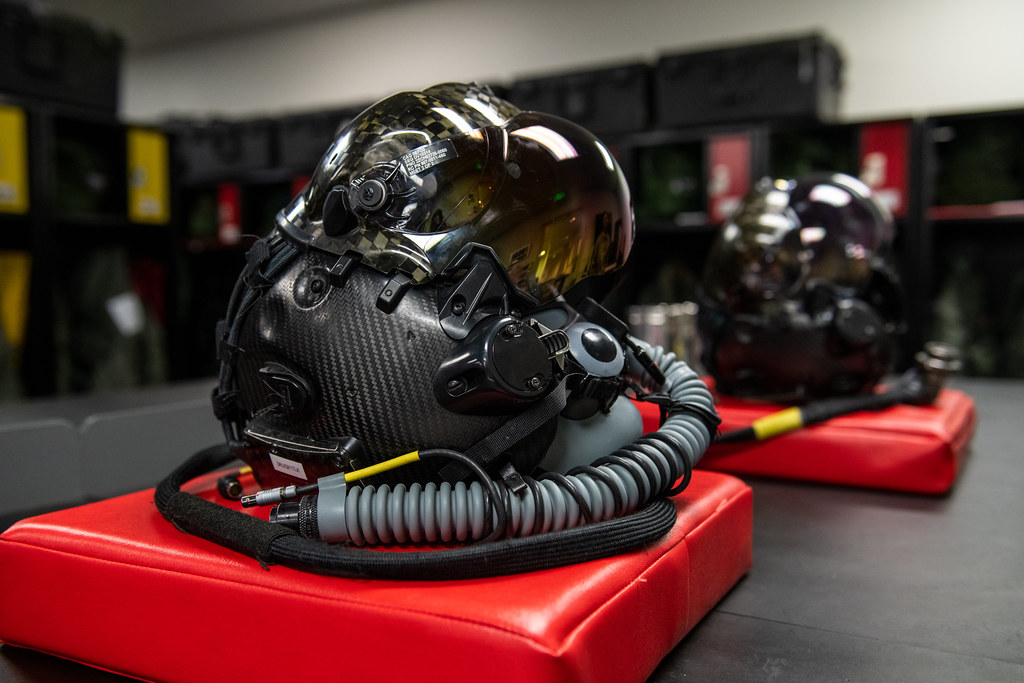HMDS and women pilots: an absurd controversy about the weight of the F-35 helmets
The Lockheed Martin F-35 Lightning II fifth-generation fighter has been surrounded by frequent controversy since its first flight.
One of the most gratuitous controversies about this plane arose a month ago in the United Kingdom. The 1st February newspaper The Times reported on a curious controversy that broke out in the British Parliament as a result of the weight of the F-35 hulls, which led to "unfortunate gender diversity" in the RAF. Air Chief Marshal Sir Mike Wigston told Parliament that the weight of the F-35 helmet means few women can fly these aircraft, due to the risk of neck injuries the helmet can cause in case the pilot is forced to eject.

As of October 2015, the F-35 helmet weight was already the subject of some controversy in the US. For those unfamiliar with the subject, the F-35 lacks a HUD (Head Up Display), the glass screen located on the control panel in front of the pilot and that shows important information about the flight and in air combat situations. Instead, the F-35 introduced a helmet with an integrated HUD: the Helmet Mounted Display System (HMDS), so that the pilot always has the information in view even if he is not looking forward. the front of the plane. This is a notable improvement in dog fights, but its drawback is increasing the weight of the helmet, by including the systems that project the HUD information on the helmet visor.

The first F-35 HMDS weighed 2.4 kilograms, which led the USAF to limit the minimum weight of pilots to 62 kilograms, regardless of their sex, in order to avoid cervical injuries in case of ejection. According to the USAF, pilots weighing less than 62 kg have a 1 in 50,000 chance of injuring their neck from an ejection. However, pilots weighing between 62 and 75 kg have a lower risk, around 1 in 200,000. To give us an idea, in the UK, the average weight of men over the age of 16 years old is 85.4 kg and that of women is 72.1 kg. This means that a woman is less likely to have the minimum weight necessary to safely pilot an F-35.
As usually happens in these debates, in the controversy that arose in the United Kingdom, picturesque proposals were heard. Conservative MP Tobias Ellwood said: "There needs to be a second lighter helmet for females to use." Labor MP Kevan Jones had an even more quaint idea for female RAF F-35 pilots: " The only alternative is you either stop them flying or ask them to go and put some weight on." I can just imagine the faces of Sir Mike Wigston listening to these quips from Members of Parliament who have no idea how difficult it is to design an F-35 and its hull.

Given the first thing that comes to mind, why not make a lighter, smaller F-35 fighter for women? And not just for women. Thin men may also feel discriminated against. And also short people. Obese people who cannot fit in the F-35 cockpit will also feel discriminated against. I have been very fond of airplanes since I was a child, and I remember my sorrow when I was told that being myopic, I could never fly a fighter anymore. Why not also make helmets for nearsighted people?
Seriously: a fighter plane is a very complex thing. The F-35's HMDS helmet is a technological jewel that deserves to be taken more seriously by some politicians, who seem to ignore not only the high unit cost of each helmet (about $400,000: more than a Ferrari, as noted by War History Online a year ago) but also the cost of its development. Being a fighter pilot is something within the reach of very few, and this is not a problem of "inclusiveness", but of common sense. Fighter pilots must be optically fit people for the work they do. This leaves a huge part of the population without options, not just women.

Otherwise, the F-35's HMDS helmet is not an isolated case among the most modern aviation helmets. Its latest and lightest version, the Gen III, has a weight of 2.13 kg . It is 270 grams lighter than the first HMDS, but keep in mind that the Joint Helmet Mounted Cueing System (JHMCS) used in F-15, F-16 and F/A-18 weighs 2 kg. The difference is quite small and still implies that pilots wearing these helmets have a minimum weight to reduce the risk of neck injuries in case of ejection. If there are politicians who don't agree with that, all they have to do is try to repeal the law of gravity.
|
Don't miss the news and content that interest you. Receive the free daily newsletter in your email: |
- Most read
- The 'hole' without civil flights around Paris during the opening of the Olympic Games
- Stunning footage of the F-15QA Ababil in flight recorded from its cockpit
- The firearms used by the Pontifical Swiss Guard, the smallest army in the world
- The most distant deployment of the Spanish Air Force in Australia and New Zealand
- Eurofighter vs F-35: the opinions of professional pilots on these advanced fighters
- The first photo of an F-16 fighter with Ukrainian insignia and the details it has revealed
- This is the driver station of an M1 Abrams tank and the impressive start of its engine

 ES
ES







Opina sobre esta entrada: